The history of Omega's long-standing popular watch model, the Constellation
The Constellation series has a 66-year history and is one of OMEGA's oldest collections.
What began as a men's chronometer in 1952 has undergone countless aesthetic transformations, from the pie-pan dials of the 1950s to the ultra-thin quartz watches of the 1970s, before being consolidated as the Constellation Manhattan in 1982.
Today, many Constellation models are equipped with Master Chronometers, upholding Constellation's original goal of combining luxury with precision.
Now let's take a look at how the Constellation was born and what models were developed.
1952: Constellation is born as a chronometer
To celebrate its 100th anniversary in 1948, OMEGA released a limited edition Centenary watch, the first chronometer-certified wristwatch with an automatic movement.
 This new model, which combined high precision and practicality, received a positive response from the public and OMEGA decided to expand its collection of chronometer-certified automatic watches.
This new model, which combined high precision and practicality, received a positive response from the public and OMEGA decided to expand its collection of chronometer-certified automatic watches.
Four years later, in 1952, the Constellation series for men was released.
The first model in the Constellation series was characterized by a star and the name of the watch, "Constellation," above the 6 o'clock position.
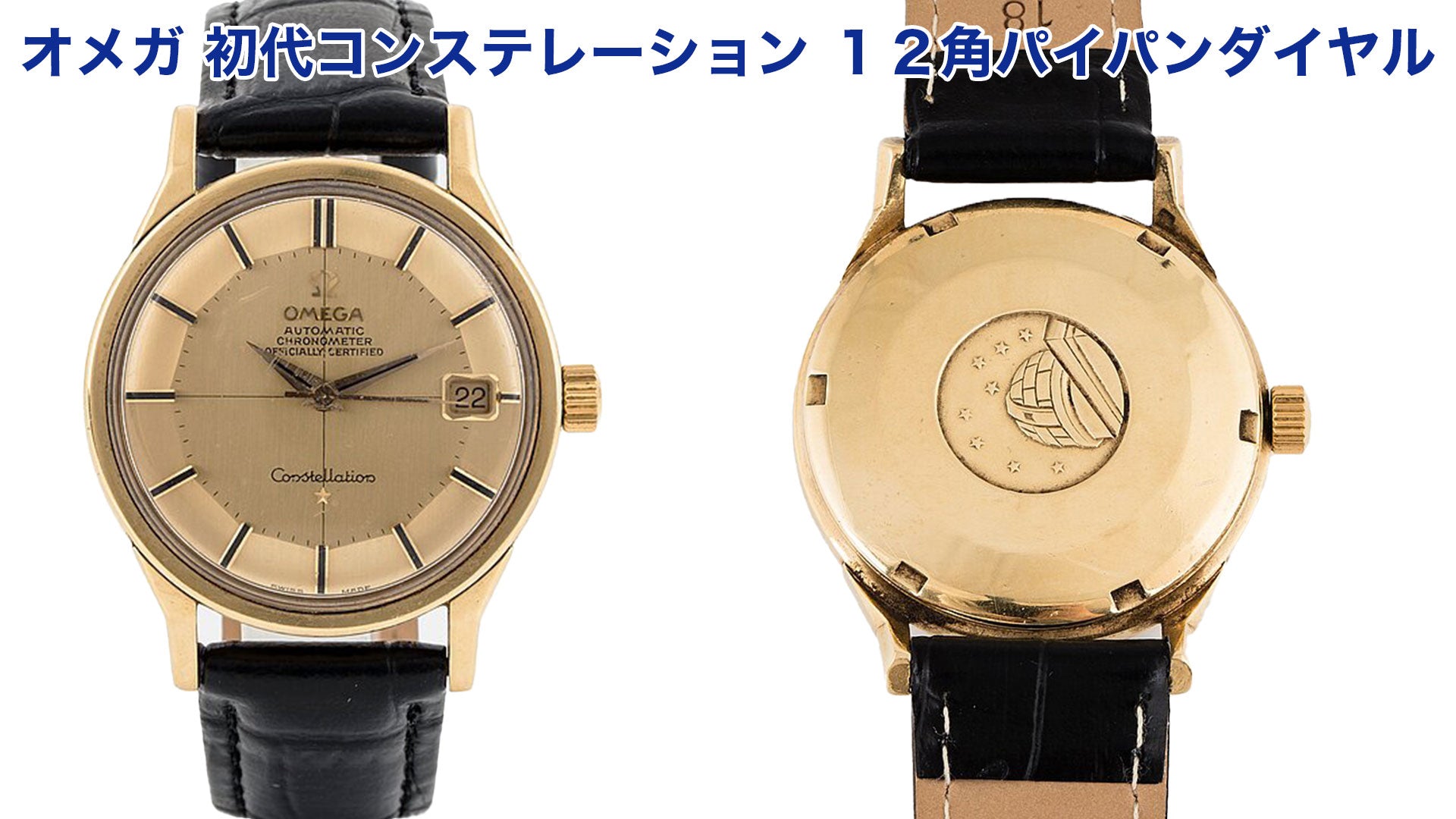
Now let me explain why it was given the name Constellation.
OMEGA achieved outstanding results at the Observatory Chronometer Competition held in 1952, where watchmakers from around the world competed against each other to determine the precision of their watches.
In this competition, the accuracy of the watch is checked over a period of 15 days in various positions and at various temperatures. The certified standard value is within -4 to +6 seconds per day.
OMEGA's outstanding performance in this competition led to its watches being recognized worldwide as being of high precision.
Therefore, the observatory engraving on the case back is said to signify that the Constellation is a highly accurate watch.
The observatory is also a symbol of space and the starry sky .
Omega named the watch Constellation after the word "constellation," and the observatory engraving is meant to represent this concept.
Now let's take a look at the movement.
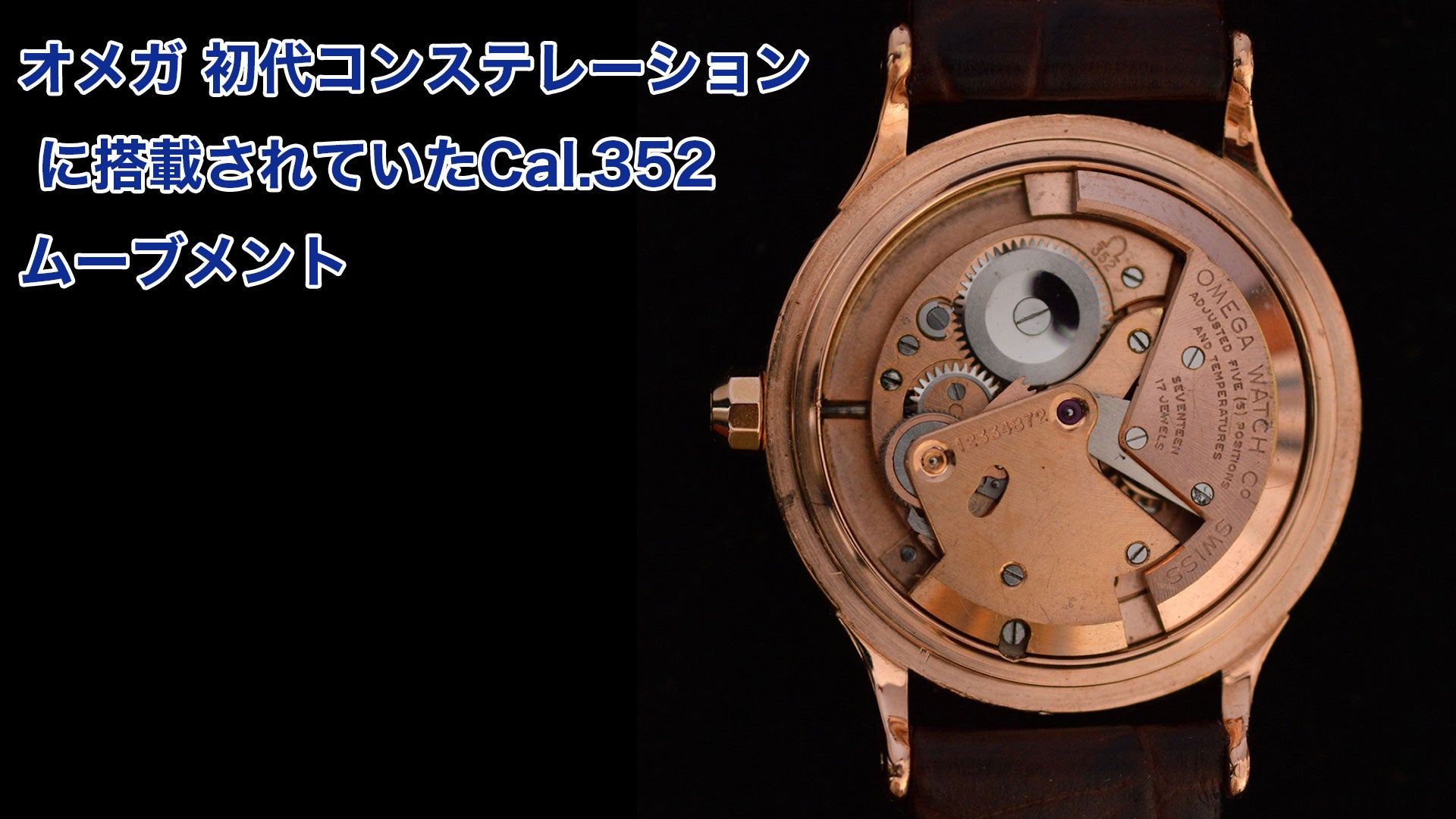
The first models were fitted with the bumper rotor calibres 351, 352 and 354, which were replaced four years later by the calibres 500, 501 and 505, and then in 1966 the calibre 561 for the date models and finally the calibre 564.
Early automatic bumper movements got their name from the slight impact sound that the wearer would hear when the rotor hit the mainspring and bounced off.
Unlike modern automatics, which rotate a full 360 degrees, the rotors in these bumper movements move back and forth through roughly 120 degrees, "bounced" by a pair of springs on opposite sides of the watch.
This was an effective way of storing kinetic energy invented by British watchmaker John Harwood in 1923.
The origin of the 12-sided pie pan dial
An unusual dial feature featured on many Constellation watches in the 1950s and 1960s was the domed dial, commonly known as a pie pan dial.

There is a boundary between the raised central part and the area where the indexes are placed, and when the dial is turned upside down it looks like a pie pan, which is why it is called a pie pan dial.
By the way, the English word for pie is "pie-pan," which means pie dish.
This design was original in a way that no other brand had ever produced before, and it gave the watch beauty and depth.
Flat dial, integrated bracelet and case

In the mid-1960s, the pie pan dial gradually gave way to flat dials, and cases also changed to more futuristic shapes and sizes.
In fact, the first integrated bracelet and case model debuted in 1969.
"The world's first watch with a bracelet integrated into the case."
This was what it was called at the time, and the system was patented and invented by Pierre Moynat in 1964.
( (Pierre Moynat would later become CEO of Omega .)
Ref. BA 368.0847 is a men's model, and Ref. BA 768.0803 is a ladies' model .
In the 1970s, creativity expanded, and women's Constellation models began to feature semi-precious stones ( It features an ultra-thin Caliber 700 with a dial adorned with precious stones (aquamarine, topaz and amethyst ) and a luxurious gold brocade bracelet.
The Quartz Shock Begins
Unlike many watch brands that fell by the wayside with the advent of quartz, Omega embraced the quartz revolution and introduced three lines of quartz calibers at the 1970 Basel Fair.
One of them, the Constellation ElectroQuartz f8192Hz, features a gold dial in a rounded square gold case, and the dial also states that it is battery-powered, with the overall design highlighting the fact that it is powered by quartz.
 Omega Constellation Quartz F 8192 HZ ref. 196.005 (Source: Antiquorum)
Omega Constellation Quartz F 8192 HZ ref. 196.005 (Source: Antiquorum)
Not surprisingly, the ultra-thin properties of quartz movements were reflected in all-new, radical Constellation designs, including a space-age-style "time computer" with a red digital display, a thin men's dress watch, and a flashy women's watch set with semi-precious stones.
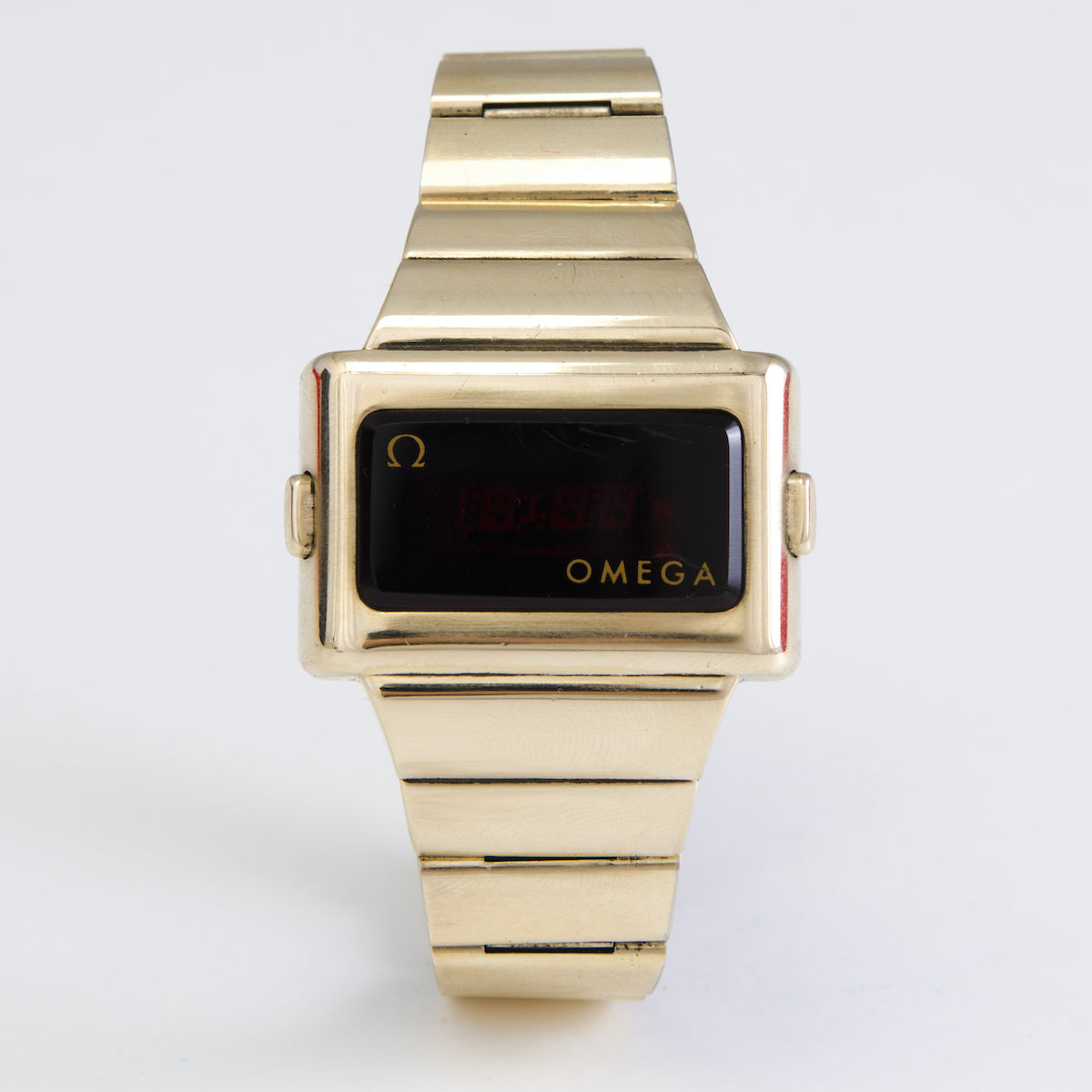
Advances in technology have also given rise to more exotic models, like this Omega Time Computer TC2, a gold-plated digital LED watch (Source: bukowskis.com).
The "claws" that Constellation has acquired
The style of the Constellation has changed significantly since it was born during the Quartz Crisis, and is far removed from the original, but in 1982, Omega released the Constellation Manhattan series.
This model was also equipped with a quartz movement (the first model was equipped with the ultra-thin caliber 1422, developed in collaboration with ETA).
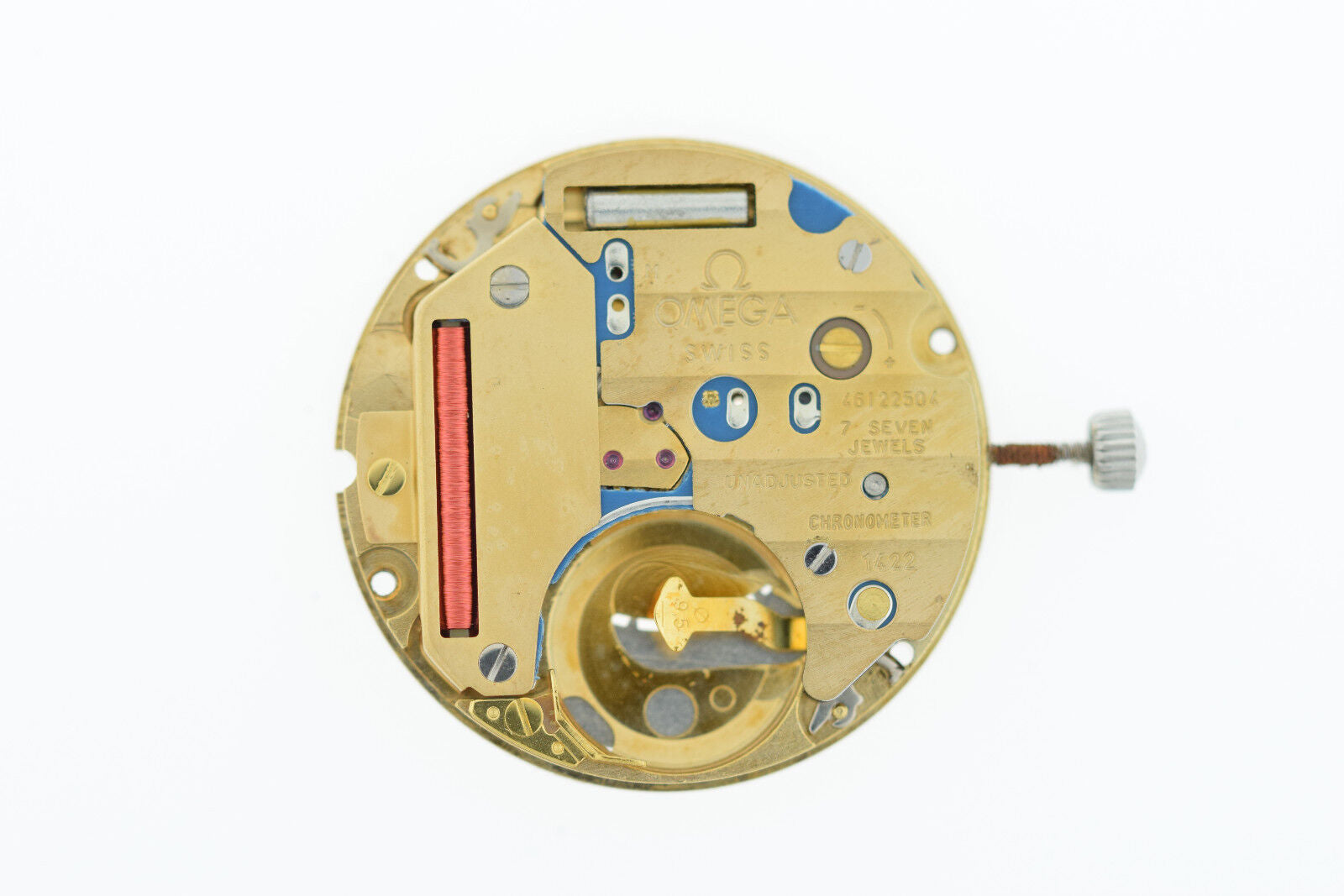
The distinctive feature of this model is the four screw-in claws called "glyphs" that extend from the case onto the dial. They are located and attached at the 3 o'clock and 9 o'clock positions .
As well as being aesthetically pleasing, these prongs also serve a practical purpose: they securely fasten the sapphire crystal to the case, ensuring water resistance.


Designed by Omega designer Carol Didisheim and patented in 1985, the Manhattan featured a barrel-shaped case and was available in both gold and steel, as well as a combination of both metals, for both men and women.

1982 Omega Constellation Manhattan
Another unusual feature of the first Manhattan models was that the indices were painted directly onto the crystal, rather than placed on the dial.
Explaining his reasoning for choosing this design, Desmond Guilfoyle said:
"From the design perspective, the crystal had to fit snugly into the case, and the bezel had to be eliminated and made thin in keeping with the ultra-thin trend of the time." By 1995, the Roman numerals on the dial had been moved to the bezel.
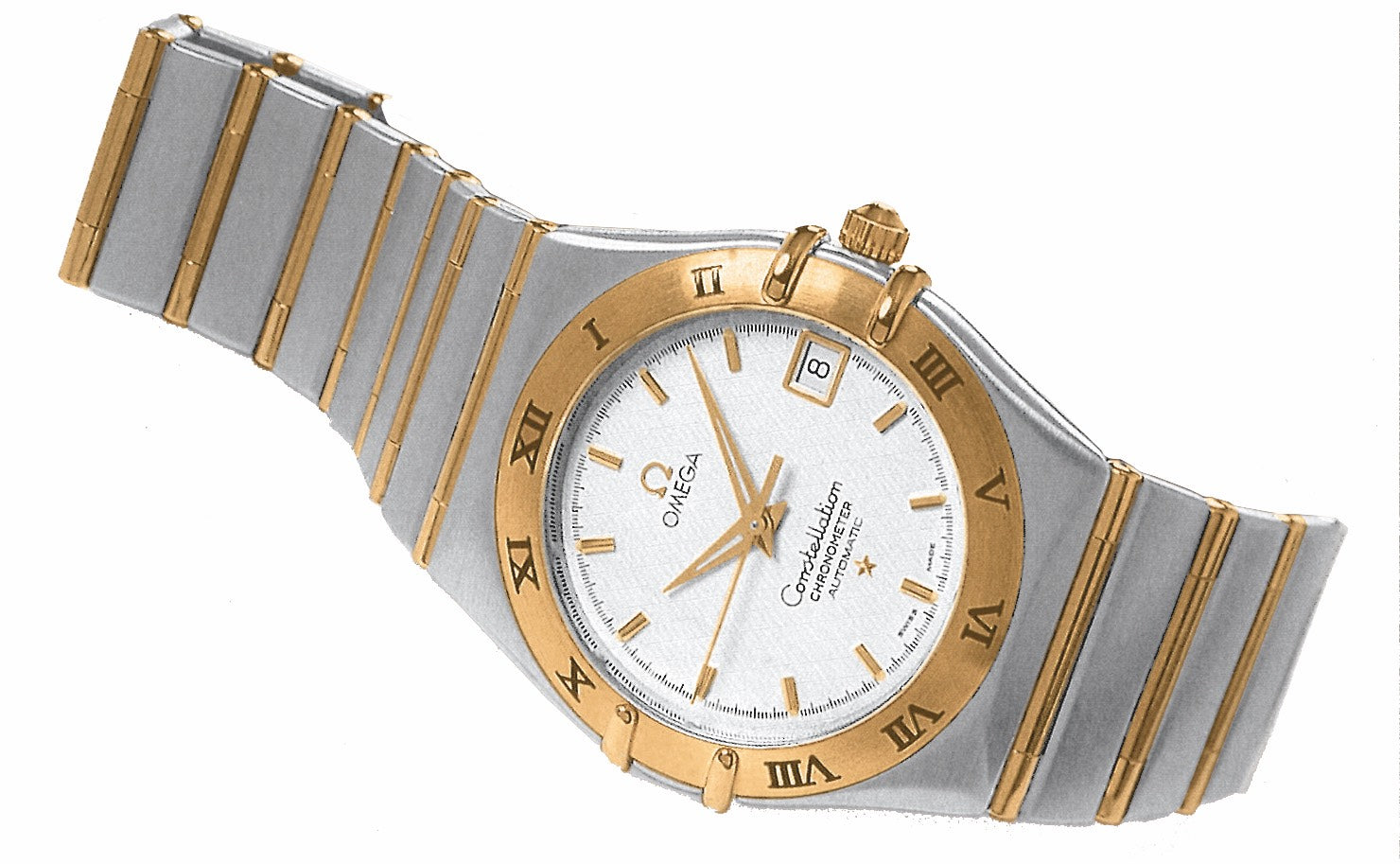
1995 "Omega Constellation Manhattan Automatic" catalogue image
Although the Constellation Manhattan was introduced with unusual leather straps, it was best known for its integrated metal bracelet with hinged links.
In 1995, Constellation gained star status with its "My Choice" campaign, featuring a variety of luminaries from the sports and arts worlds, including model Cindy Crawford, tennis player Martina Hingis and Robert Wagner.
The Constellation has come in countless variations, with or without diamonds, and in 1999, a square case called the "Quadra" was introduced, sold exclusively to women.
Return to the good old mechanical movement
In 1984, automatic models were introduced alongside quartz models.
The movement used at this time was the calibre 1111, a certified chronometer movement based on the famous ETA flagship movement 2892-2.
This movement "saved Omega from a crisis, and was recognized by many Swiss luxury watch manufacturers as being sufficiently reliable to serve as the basis for their high-end models.

New design "Omega Constellation Double Eagle" (Source: TouchOfmodern)
Introduced at the OMEGA European Masters golf tournament in 2003, the Constellation Double Eagle was upgraded with OMEGA's first Co-Axial calibre 2500.
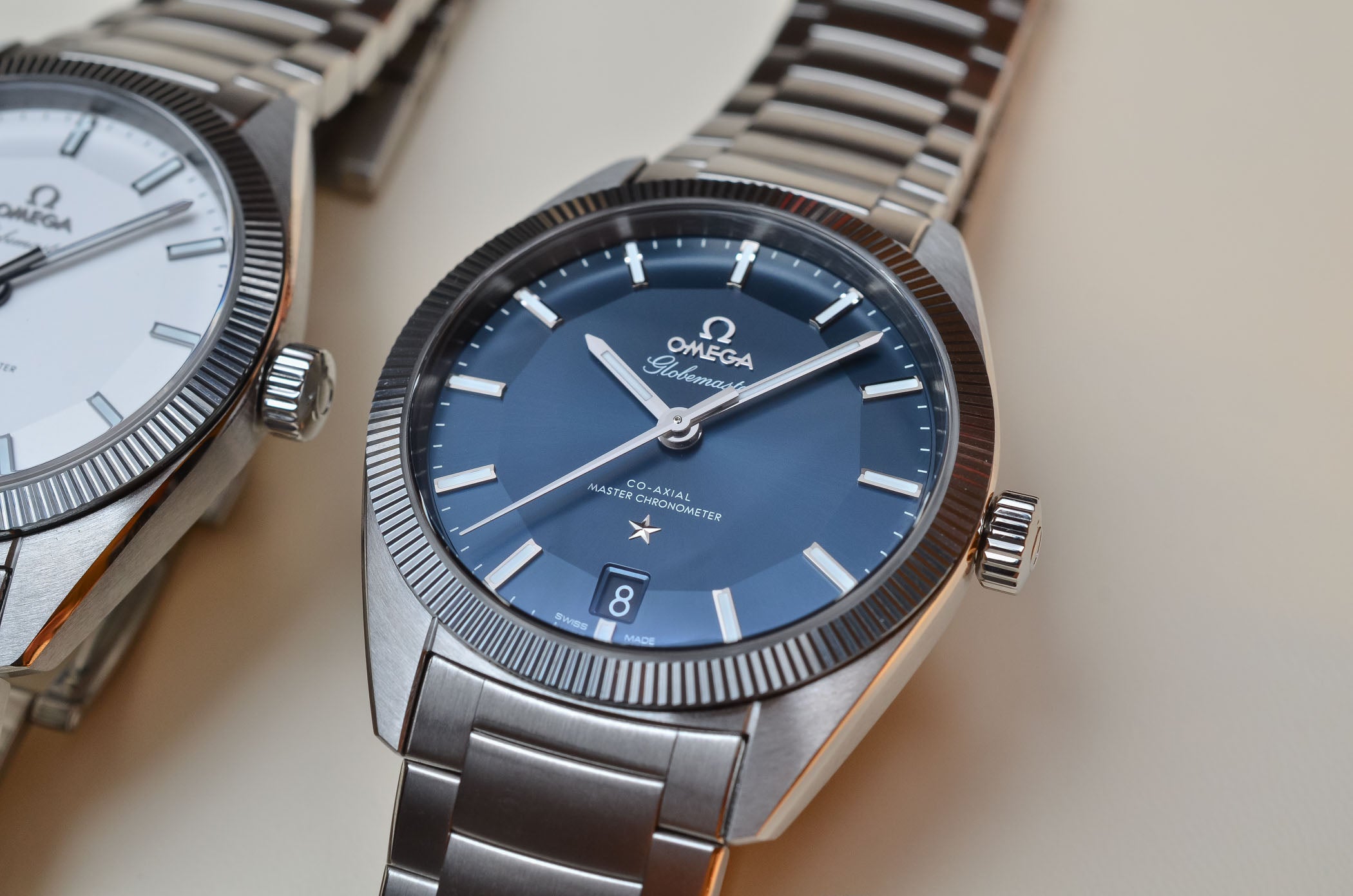
The 2015 Omega Constellation Globemaster is equipped with a METAS-certified chronometer movement. It is a revival of the classic Constellation style for men with a pie-pan dial.
2015: Constellation becomes a Master Chronometer
But the big news came with the introduction of Omega's Master Chronometer certification in 2015.
In addition to COSC chronometer certification, Master Chronometer certification goes eight steps further, replicating real-life wearing conditions and guaranteeing the watch is anti-magnetic and water-resistant.
First introduced on the Globemaster in 2015 and marking the comeback of the Pie Pan dial in the Constellation family, Master Chronometer status has been gradually introduced across Omega's watch family, including the 29mm mechanical version of the Manhattan.


All 29mm Manhattan models are equipped with Caliber 8700, an automatic movement with a 50-hour power reserve and Master Chronometry status.
Applied to everyday life, this means providing women with an extremely practical watch that is unaffected by magnetic fields generated by mobile phones, metal magnetic clasps, laptops, MRI scans, induction hobs, automatic doors and more.
Major design overhaul
In 2009, the Manhattan underwent a complete redesign with a new dial, more refined prongs, a more comfortable "Mono-Lan" bracelet, and a new butterfly clap.
It was also produced for women in three sizes - 29mm, 28mm, and 25mm (the latter equipped with quartz movements), marking a decidedly feminine direction for the Manhattan. 
2009 Omega Constellation Manhattan
The women's Constellation Manhattan collection was expanded in 2018 to include many models with or without diamonds, a new date window at 6 o'clock, thinner lugs, polished bevels, stylized skeleton hands, and a variety of dial options.
Launched with great fanfare, featuring long-time brand ambassadors Cindy Crawford and Nicole Kidman, Manhattan's star power continues to shine.

The 41mm Globemaster features a vintage-style pie-pan dial and a Co-Axial Master Chronometer movement, while the 38mm and 35mm Constellation models are a mix of Co-Axial (not Master Chronometer) and quartz models.

Then, in 2015
The Constellation series has many different names, which can make it a little confusing, but here we will introduce the current model lineup and their respective movements.



